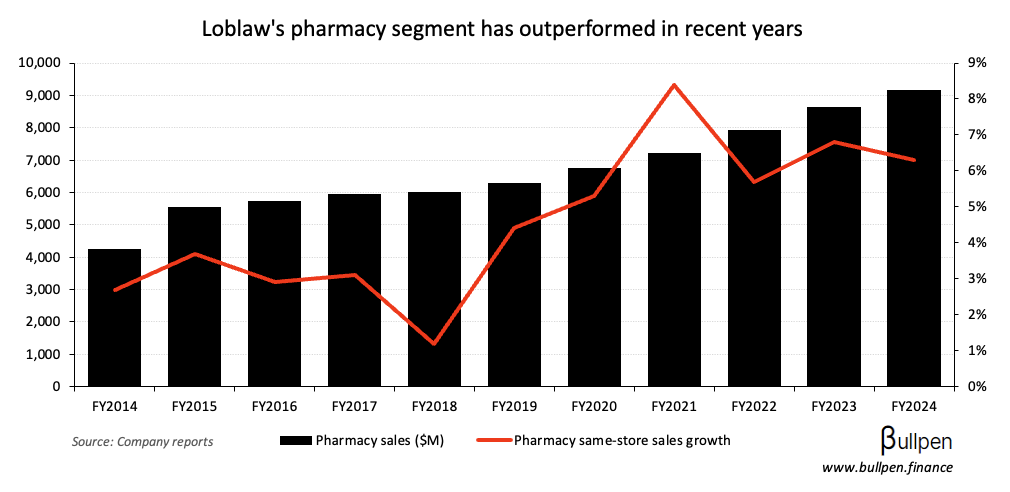Real estate recap: what happened and what's coming?
The Canadian REITs are largely done with earnings season and given the group’s diversity, there were some winners and losers - though results were pretty solid overall.
| Company | EBITDA | Consensus |
|---|---|---|
| 🇨🇦 CAPREIT (CAR-U) | 163M | 169M |
| 🇨🇦 Killam (KMP-U) | 56M | 57M |
| 🇨🇦 Boardwalk (BEI-U) | 88M | 87M |
| 🇨🇦 InterRent (IIP-U) | 37M | 38M |
| 🇨🇦 Minto (MI-U) | 25M | 25M |
| 🇨🇦 CT REIT (CRT-U) | 112M | 109M |
| 🇨🇦 Choice (CHP-U) | 241M | 256M |
| 🇨🇦 First Capital (FCR-U) | 111M | 106M |
| 🇨🇦 RioCan (REI-U) | 196M | 193M |
| 🇨🇦 Primaris (PMZ-U) | 72M | 71M |
| 🇨🇦 Dream Ind. (DIR-U) | 84M | 86M |
| 🇨🇦 Nexus (NXR-U) | 31M | 30M |
| 🇨🇦 PRO REIT (PRV-U) | 14M | 14M |
| 🇨🇦 Granite (GRT-U) | 113M | 112M |
| 🇨🇦 Allied (AP-U) | 98M | 93M |
Recurring themes included more runway for rents to move higher, resilient occupancy, and non-core divestitures to fund new development, but the outlook for each class of real estate is more nuanced.
Apartments: immigration headwind = go regional
It’s been a challenging ride for the apartment REITs lately, as less immigration-linked demand weighs on investor sentiment.

Since the policy shift we’ve seen a modest compression in occupancy rates, though it’s not cause for concern yet in our view - we’d wait for data from spring leasing season to see how things are really shaking out.

Despite the tougher demand backdrop, the apartment REITs performed pretty well, offsetting occupancy losses with higher rent prices to grow SPNOI.

The results highlight the product differences within the group - as Boardwalk (BEI-U) and Killam (KMP-U) benefit from favourable regional exposure to western and atlantic Canada, respectively, while Minto (MI-U) sits in the most vulnerable position given its focus on premium assets (less cushion in rents).
InterRent (IIP-U) should stay topical as well, given a recent activist campaign led by Anson funds that could result in IIP selling to private equity, a growing trend in Canadian markets that we covered recently.
Retail: controlled looks good in risk-off trade
Results for the retail REITs were slow and steady as you’d expect, with the exception of Primaris (PMZ-U), who has seen recovering occupancy rates support SPNOI, though that’s about to reverse course (more below).

It’s this predictability that makes them a perfect fit for the duration trade that we’ve been hot on for a few weeks now. They act like bonds given the long lease terms and slow but predictable rent growth.

But they’re not all created equal.
What we’re going to call controlled retail REITs are tailor made for this trade, as their relationship with their biggest leaseholder (who typically owns a huge stake) adds an additional layer of stability.

We’d pick the grocer-controlled REITs Crombie (CRR-U, Empire relationship) and Choice Properties (CHP-U, Loblaw relationship) over CT REIT (CRT-U, Canadian Tire relationship) today, as a potential HBC bankruptcy could weigh on sentiment.
The Hudson’s Bay news could also impact investor appetite for RioCan (REI-U, ~20% stake in a $1.6B JV) and Primaris (PMZ-U, ~10 malls with exposure to HBC) in the near-term.
Industrial: nuanced, with varying risks
The industrial REIT universe isn’t very uniform as this quarter’s results show, making it less useful to look at the industry in aggregate.

If we had to though, we don’t love the structural setup in comparison to some other pockets within real estate (regional apartments, retail), as occupancy has softened over the past couple years.

We’d even be cautious on the names that showed strong growth this quarter, given:
Granite (GRT-U) has large auto exposure that could be hit by tariffs, with Magna accounting for more than a quarter of GRT’s revenue.
Nexus (NXR-U) has been deal happy and has the leverage ratio to show for it at 10.5x, well above peers.
Office: do you like pain?
We thought about leaving this section out entirely, because why would you buy office right now?
While there’s a number of smaller office names we could cover here, they don’t own attractive assets and the stocks barely trade.
Allied Properties (AP-U) is the only name we’d look at, given they own some high quality assets in core cities - but there’s nothing inspiring in their results lately too.

While the company owns high quality real estate, it tends to be smaller office buildings - the type that tech companies might lease, making them more vulnerable to remote work and forced turnover, which is reflected in occupancy rates.

To make a bet on office there has to be a catalyst beyond valuation, and we just don’t see one coming anytime soon.
Get smarter on Canadian markets
Get our insight-packed coverage of Canadian markets delivered to your inbox 3x per week in 5 minutes or less.
Get smarter on Canadian markets
Get The Morning Meeting, our insight-packed Canadian markets newsletter delivered to your inbox 3x per week in 5 minutes or less.
Read by 500+ professionals from:

